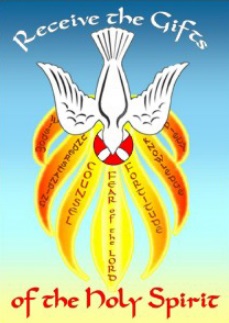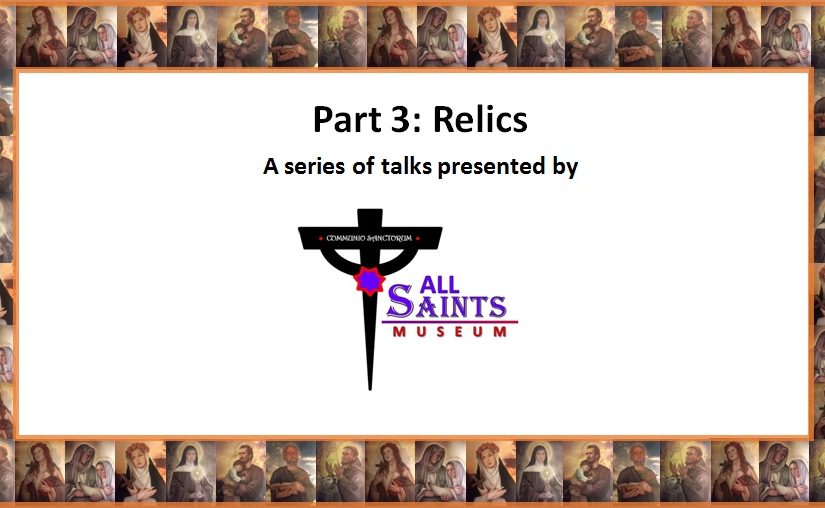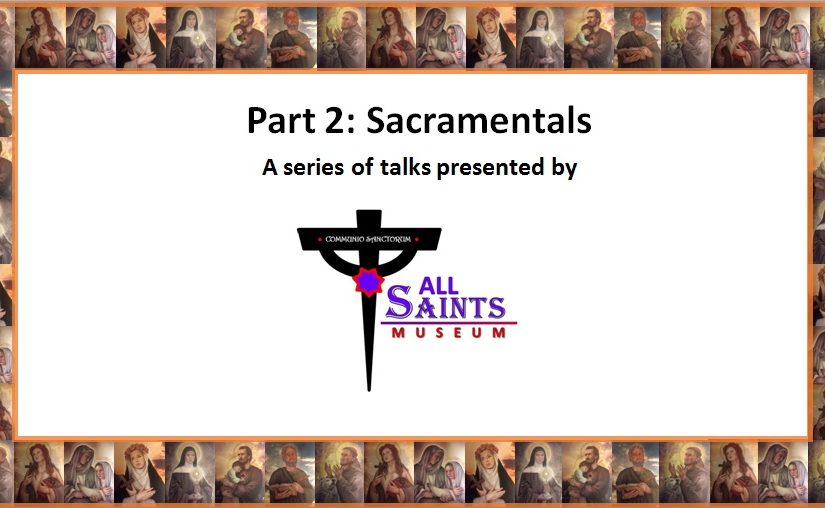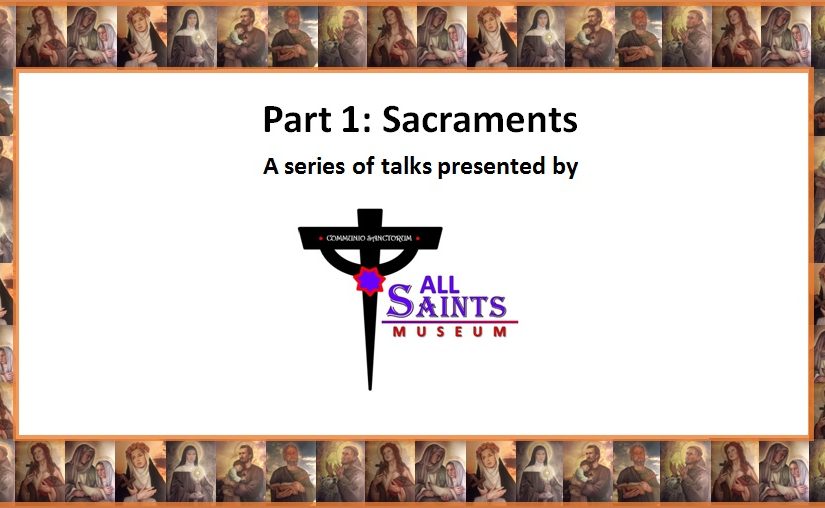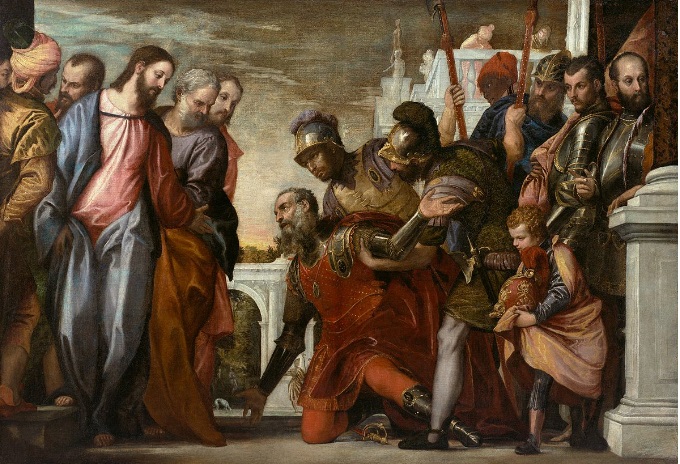Amidst the scandals and the news that has left many of us grieving – trying to process how those we trust as the heads of the Bride of Christ, His Church, have stooped so low -, I was also rocked by some more acute personal news that our Parish School will be dropping 8th Grade Confirmation. Our oldest daughter being in 8th Grade this year has left me digging deeper on what this Sacrament really means, and if there is any significance to when one should receive it. And I would like to share my findings with you.
Now first of all, our Parish isn’t the only one that has punted this Sacrament out to the high school years and beyond. It has been general practice in our Diocese – which is one of the reasons our School felt so special when they adopted an earlier Confirmation practice.
Nevertheless, the reasoning behind our Parish’s decision is that the 8th Graders are not yet mentally mature enough to know what it means to live a fully Catholic life in the faith, and that they should gain some real-life experience before they make this leap into full initiation.
Right off the bat this didn’t sit right with me, because after-all the Sacrament itself is in aide to maturity. And secondly, taking the same stance with other Sacraments, why do we let 7 year olds recieve the Body, Blood, Soul and Divinity of our Lord in the Most Blessed Sacrament when they can’t even tie their own shoes let along grasp the concept of our God in the appearance of bread? But yet, they somehow are mature enough to receive this Sacrament. So what gives with Confirmation?
Here’s what I’ve come to understand –
According to the Catechism of the Catholic Church (1290), “In the first centuries Confirmation generally comprised one single celebration with Baptism…” this was done on infants. Furthermore, in CCC (1307) “For Centuries, Latin custom has indicated ‘the age of discretion’ as the reference point for receiving Confirmation. “
The age of discretion of course being around 7 years. This is around the same time we traditionally give children the Sacrament of Holy Communion (the Body of Jesus Christ). – and as noted, we allow Children to receive Jesus Christ, the King of the Universe! For many years, and for this very reason, Holy Communion wasn’t given until after Confirmation, if not given together.
In other words, for the better part of the entire Church history Confirmation has been given to children – not to young adults. And additionally – in CCC (1308): “Although Confirmation is sometimes called the ‘sacrament of Christian maturity,’ we must not confuse adult faith with the adult age of natural growth, nor forget that the baptismal grace is a grace of free, unmerited election and does not need ‘ratification’ to become effective.” And CCC (1314) “Indeed the Church desires that none of her children, even the youngest, should depart this world without having been perfected by the Holy Spirit with the gift of Christ’s fullness.”
In general, the Catholic Church doesn’t tent toward the idea of waiting. On the contrary, the caveats and exceptions in the CCC all lean toward giving the Sacrament even earlier – i.e. especially if there is danger of death as an example.
And this is because Confirmation isn’t supposed to be “the end” so to speak of our Christian development in maturity. It is merely the beginning! This Sacrament strengthen and Confirms a faith – fortifies it for battle. The Sacrament of Confirmation allows the recipient to receive the full spectrum of the Gifts of the Holy Spirit – weapons that they can use to do real battle in the Spiritual life. These are tools they absolutely need in order to have the best chance of retaining their Faith through high school and into adulthood.
Sacraments are a gift, freely given. And therefore, whether the child receiving it is ready at that moment or not, sooner or later they will be.
Although I understand pastoral concerns for the children’s readiness of the 8th graders, I just cannot agree with the thought of withholding this Grace at such a precarious point in a person’s life. How many souls could be at stake. Just as a couple might be waiting until they are “ready” to get Married…. Or a Married couple waiting to be “ready” to have children.. There is a sweet spot where readiness cannot be measured. We’re never ready to be Married, but if we are called to it, then God provides. The same is true for having children. If we waited until we were ready, then no one would ever have children. And the same is true for the Sacraments. How can we ever be ready enough to live Divine Life!? But His Grace is sufficient.
Our children need this Sacrament in order to live their Christian life to the fullest. Before high school is where this counts the most, because in high school it may be too late. Why would we wait for them to enter into high school – the time where they will be the most tempted and tried in all aspects of moral question – without first fortifying them and giving them this Grace?
I can guarantee that many children by their first year in high school will have lost any hope of being Confirmed, and for those that do get Confirmed after that first year it will have been too late in some cases of sin. (Think of these major points – who they make new friends with, after school activities, will they start to work, starting to drive, starting to date). Why would we allow them this chance at sullying their Baptismal gowns?
In a sports related example…, it would be like giving a football player all the training he needs to go out and play a game, but yet withholding the pads until he gains some experience in playing. The athlete needs all of the training and the equipment in order to play the game without getting injured. A coach can’t put a player out on the field and say – when there are ready to get hit, then they can come get the helmet. They go out on the field with all the equipment already in place, whether the helmet is needed or not!
It is a mystery to my why Dioceses has done this for many years – that is to wait. It may have developed more out of a sense of availability for the Bishop to get around and perform the ceremony. It may also be a way to offer opportunities for those who are converting to the faith later in life to have that. And dare I speak the more cynical – perhaps its a way of creating more “classes” so that the customers… err… I mean candidates can register for a small fee… Praise God, as I understand it, the trend now is actually swinging back the other way. And there are other parishes and articles on line that talk to this revival of the order of the Sacraments.
Now my final point of the matter is the question on where our Catholic elementary Schools stands. If we want our schools to stand apart from the rest, then we cannot simply chase after academic prestige. That is what the schools seem to be doing. We should be offering a rigorous Religious Education, providing all the Sacraments of Initiation, raising and sending off well educated – yet more importantly – well-formed young adults. This is the gift that Catholic education can give which will distinguish us from the others. Kids get bombarded with Math homework, Science projects, English papers to write, and yet Religion is a touchy feely – basically pass or fail – class that has no deep content. I’ve never seen any children pushed to their limit to understand the Sacraments, the Virtues, the Seven Deadly Sins, Angels or any such article of our Faith. I totally understand that parents are the first educators. But that’s the case as well for all the other subjects, and we don’t use that excuse to push the burden of education for math on children. Yes, parents should know their faith, and we should pass our faith on. But as we rely on the “experts” to help them with math and science, we should as well for our Catholic faith. This is in fact the ministry of the Church to help our children learn the faith from the experts.
I encourage you all to please learn about this Great Sacrament, and urge our Schools and Dioceses to offer it earlier rather than later. Our future generation of Saints depends on this.
God bless from your family here at All Saints Museum


